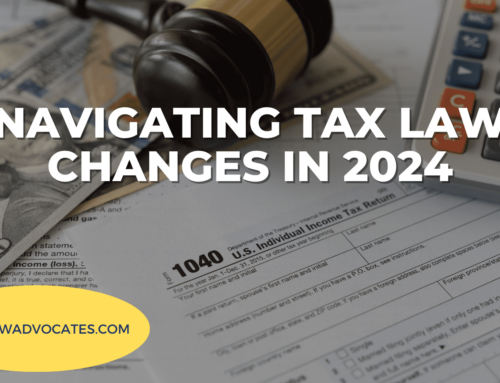An IRA is the simplest method to begin saving for retirement, but the type of account you choose can significantly impact how much money you receive when you stop working.
There are substantial differences between them that each investor should understand before deciding whether to open.
Traditional IRAs allow you to postpone paying taxes until you withdraw funds from your account later in life. With Roth IRAs, on the other hand, you pay taxes upfront by contributing after-tax monies, and your withdrawals are tax-free later in life (as long as your account has been open for at least five years).
Traditional IRAs are preferable for people who expect to be in a lower tax bracket when they retire, while Roth IRAs are best for those already in a lower tax bracket. The latter is most likely better for younger investors just starting in their professions and want to retire with greater money (and a higher tax rate).
When deciding between a regular IRA and a Roth IRA, more to consider than just tax considerations. But with these tax advantages alone, IRAs stand out as an excellent option to save for retirement. A most appealing feature of an IRA (both traditional and Roth) is that it allows you to grow your investments tax-free, which means you won’t be taxed on capital gains or dividends while they’re still in your IRA.
IRAs are also simple to set up and use and are available at most credit banks and unions. There are also investment firms and online brokers that can help you set up your IRA.
Automatic contributions from your savings account or checking account can be set up, making investing for your future one less thing to worry about.
And, unlike a 401(k)-plan offered by your company, an IRA allows you to choose your investments, and many banks will assist you depending on your retirement schedule.
An IRA is an excellent option to enhance your nest egg/retirement savings if you already have a 401(k) plan via your workplace. Because a 401(k) offers the same tax advantages as a standard IRA, the decision is simple: adding a Roth IRA to your 401(k) will ensure that you obtain a tax break now and in the future.
You can engage in trading ETFs, bonds, stocks, and mutual funds in a Roth IRA account, among other traditional financial assets. A self-directed IRA allows you to invest in a broader selection of assets. You are the investor, not just the custodian, with a self-directed IRA. You decide whether or not to invest in peer-to-peer loans, real estate, or even certain precious metals. However, the IRS prohibits you from investing in stamps, diamonds, antique goods, and other collectibles, as well as life insurance plans, regardless of whatever sort of IRA you have.
If you file separately or did not live in the same house with your spouse at any point throughout the year, the “single” filing status determines your IRA deduction.
The deadline for both standard and Roth IRA contributions is the same. You can put money into your IRA throughout the calendar year and until April 15 of the following year.
Traditional and Roth IRA Advantages
Roth IRAs have several advantages:
Tax Deductions
Traditional IRA contributions are made before taxes, whereas Roth IRA contributions are made after taxes. This means that, in most situations, they can be deducted from your income, albeit with certain restrictions.
Growth Without Taxes
Both Roth and traditional individual retirement accounts provide for tax-free asset development. This implies that no taxes are charged on the income or capital gains earned by the investments until the money is distributed.
Traditional and Roth IRA Disadvantages
Limitations on Contributions
Contributions to Roth and traditional IRAs are restricted. The maximum contribution amount per person for 2020 and 2021 is $6,000, or $7,000 if you’re 50 or older. In addition, you may not be eligible to contribute to a Roth IRA if your modified adjusted gross income (MAGI) reaches a specific threshold.
Penalties
Because an IRA is meant to be used for retirement, there are often penalties if you withdraw funds before reaching retirement age.
With a traditional IRA, any withdrawals made you turn 59 are subject to a 10% penalty on top of the taxes payable. However, you can withdraw a sum equal to your contributions, penalty-free and tax-free at any time, with a Roth IRA.
Required Withdrawals
When you reach 72, you must begin taking required minimum distributions (RMDs). The withdrawal amount is determined by your life expectancy and is applied to your taxable income for that year.
Why Roth IRA Works for Many People
- With a Roth IRA, early withdrawal requirements are significantly more flexible. Although early withdrawals usually are discouraged, a Roth IRA permits you to withdraw contributions at any time without paying income taxes or incurring an early withdrawal penalty.
If you take money out of a regular IRA before you retire, the IRS isn’t as forgiving: You’ll almost certainly be hit with a 10% early withdrawal penalty and will owe taxes on the money you take out at your current tax rate.
There are some exceptions, but you’ll need to approach with far more caution than you would with a Roth IRA.
- For retirees, the Roth IRA also has fewer restrictions. For example, required minimum distributions promptly start when you turn 72 if you have a traditional IRA.
Unless you inherit a Roth IRA, there are no mandatory minimum distribution rules. You may leave the savings in the account to grow tax-free for as long as you live.
- You’ll wind up with more after-tax money in a Roth IRA unless you’re a prudent saver. Yes, both types of IRAs have tax advantages.
However, there is an often-overlooked advantage to Roth’s tax treatment. You won’t be tempted to spend your tax break until retirement (through tax-free withdrawals) because it won’t arrive until then.
The tax benefit from a traditional IRA is provided annually when you file your taxes, making it easy to spend the money on whatever you want.
If you need professional help or advice on your IRA and other tax issues, contact us now! At Tax Law Advocates, our team of federally licensed enrolled agents, tax attorneys, and accountants have all worked towards the common goal of helping you solve issues with both the IRS and state tax authorities.





